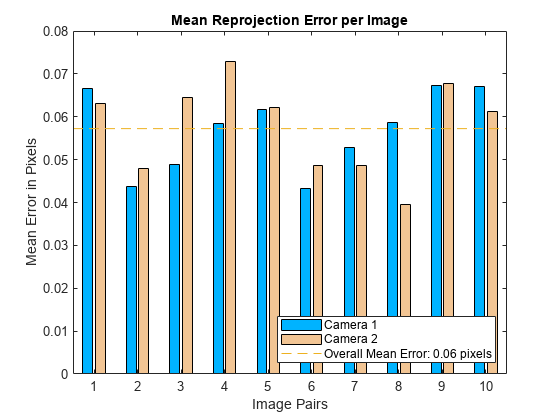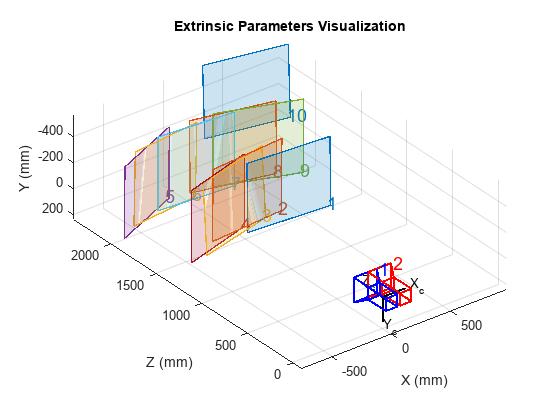estimateCameraParameters
単一カメラまたはステレオ カメラをキャリブレーションします。
構文
説明
[ は、単一カメラとステレオ カメラの内部パラメーターと外部パラメーター、および歪み係数の推定値を含むオブジェクト cameraParams,imagesUsed,estimationErrors] = estimateCameraParameters(imagePoints,worldPoints)cameraParams を返します。この関数は、カメラ パラメーターの推定に使用されたイメージと、単一カメラのキャリブレーションの標準推定誤差も返します。関数 estimateCameraParameters は、外部パラメーターと内部パラメーターを推定します。
[ は、ステレオ カメラのパラメーターを含む stereoParams,pairsUsed,estimationErrors] = estimateCameraParameters(imagePoints,worldPoints)stereoParameters オブジェクト、stereoParams を返します。この関数は、ステレオ パラメーターの推定に使用されたイメージと、ステレオ カメラのキャリブレーションの標準推定誤差も返します。
cameraParams = estimateCameraParameters(___,Name=Value)WorldUnits="mm" は、ワールド単位をミリメートルに設定します。
例
入力引数
名前と値の引数
出力引数
アルゴリズム
参照
[1]
[2]
[3] Bouguet, J.Y. “Camera Calibration Toolbox for Matlab”, Computational Vision at the California Institute of Technology.
[4] Bradski, G., and A. Kaehler. Learning OpenCV : Computer Vision with the OpenCV Library. Sebastopol, CA: O'Reilly, 2008.
バージョン履歴
R2014b で導入参考
アプリ
オブジェクト
関数
showReprojectionErrors|showExtrinsics|undistortImage|undistortPoints|detectCheckerboardPoints|generateCheckerboardPoints|patternWorldPoints|reconstructScene|rectifyStereoImages|disparityBM|disparitySGM|estimateStereoRectification|estimateFundamentalMatrix|estimateStereoBaseline







